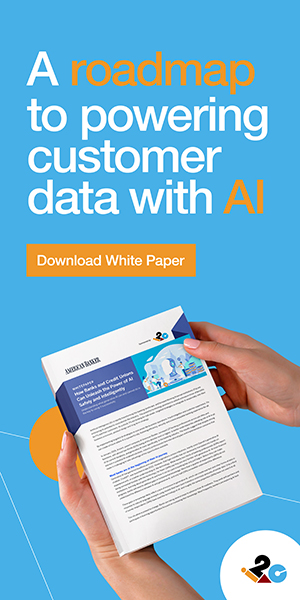The banking industry is gradually but steadily adopting generative AI. According to one report, 80% of banks are conscious of the advantages of AI and machine learning. Furthermore, three out of four institutions that hold over $100 billion in assets are currently using AI, while almost half of banks with less than $100 billion are doing so.
This is because the use of AI in banking and finance offers applications to boost profitability and increase internal efficiencies. In front office situations, AI offers several possible applications in customer-facing situations.
How AI Is Disrupting the Banking Industry
Personalized customer experiences. AI-powered chatbots and virtual assistants can engage in natural language conversations with consumers, boosting customer satisfaction and reducing workloads on human employees.
By analyzing a customer’s purchase history, preferences, and browsing behavior, AI can recommend relevant products, services, and solutions, enhancing the overall customer experience.
Customer service training and optimization. AI systems can learn from each customer interaction, improving responses over time. This iterative learning process allows systems to become more accurate and efficient in providing solutions.
Automated issue resolution. AI can automate the resolution of common customer issues, suggesting appropriate solutions or guiding customers through troubleshooting steps, reducing the need for human intervention.
Predictive analytics. AI can analyze customer behavior and historical data to predict potential issues or trends. This proactive approach allows companies to address customer concerns before they escalate, leading to higher customer satisfaction.
Multilingual support. Instant translations for customer inquiries in multiple languages are possible through AI-powered translation tools, enabling businesses to serve global customer bases without the need for extensive language skills.
Sentiment analysis. How is the customer feeling? AI can analyze customer sentiment to determine how customers feel about a product, service, or interaction, allowing companies to proactively adjust their strategies and address customer concerns.
Feedback loop. Collecting feedback from customers about their interactions with AI-powered systems is crucial. This feedback can help companies refine and improve their AI solutions to better align with customer needs.
Generative AI also has several middle and back-office applications, including:
- Data analysis and decision-making. Able to process massive amounts of data to extract meaningful insights, AI can offer banks a competitive advantage in a rapidly changing financial landscape.
- Risk assessment and management. Generative AI can analyze multifaceted risk factors and their potential correlations, providing banks with a more comprehensive view of their risk exposure.
- Product and service innovation. Banks can use generative AI to analyze customer preferences, market trends, and emerging technologies and then develop new financial products that cater to evolving consumer needs.
- Credit scoring and loan approvals. Banks can also use generative AI to holistically consider broader creditworthiness factors, including social media activity, online behavior, and transaction patterns.
- Compliance and regulatory reporting. Using generative AI, banks can automate the process of extracting, analyzing, and organizing data for regulatory compliance to reduce errors and free up human resources for more strategic tasks.
- Data analysis and insights. AI can process and examine large volumes of customer data to identify patterns, trends, and pain points. This information can help improve products, services, and support strategies.
Using AI in Banking to Combat Fraud
In addition to the above use cases, AI can help decrease false positives for credit card declines. Generative AI can be used to identify usage patterns and detect previously unseen types of fraud attacks. Trained with massive amounts of transactional data to learn how individual cards are usually used, generative AI can provide insights into emerging fraud trends to human analysts. The technology can filter out low-likelihood fraud alerts, reducing manual review efforts.
The fraud team, for its part, could begin to analyze data with human questions as opposed to database queries. In addition to quickly creating suspicious payment behavior summaries, fraud managers could use generative models to develop new fraud rules, apply them to machine learning models, and suggest improvements to boost performance.
The Future of AI in Banking
Generative AI is poised to be a game-changer in the banking world, revolutionizing customer service, risk assessment, and decision-making. As banks continue to embrace this technology, they must navigate the complexities of its implementation and use it to address potential challenges regarding data privacy concerns and regulatory compliance.
Banks will also need to address the issue of balancing the use of automation and a human touch as consumers’ expectations continue to evolve. While AI can handle many tasks, there will still be complex or emotionally sensitive issues that require human intervention. AI can assist human customer service representatives by providing relevant information and suggestions during interactions. Additionally, human analysts will need to check AI-enhanced work for accuracy. Ultimately, AI should be treated as a valuable partner, not a replacement for human knowledge.



